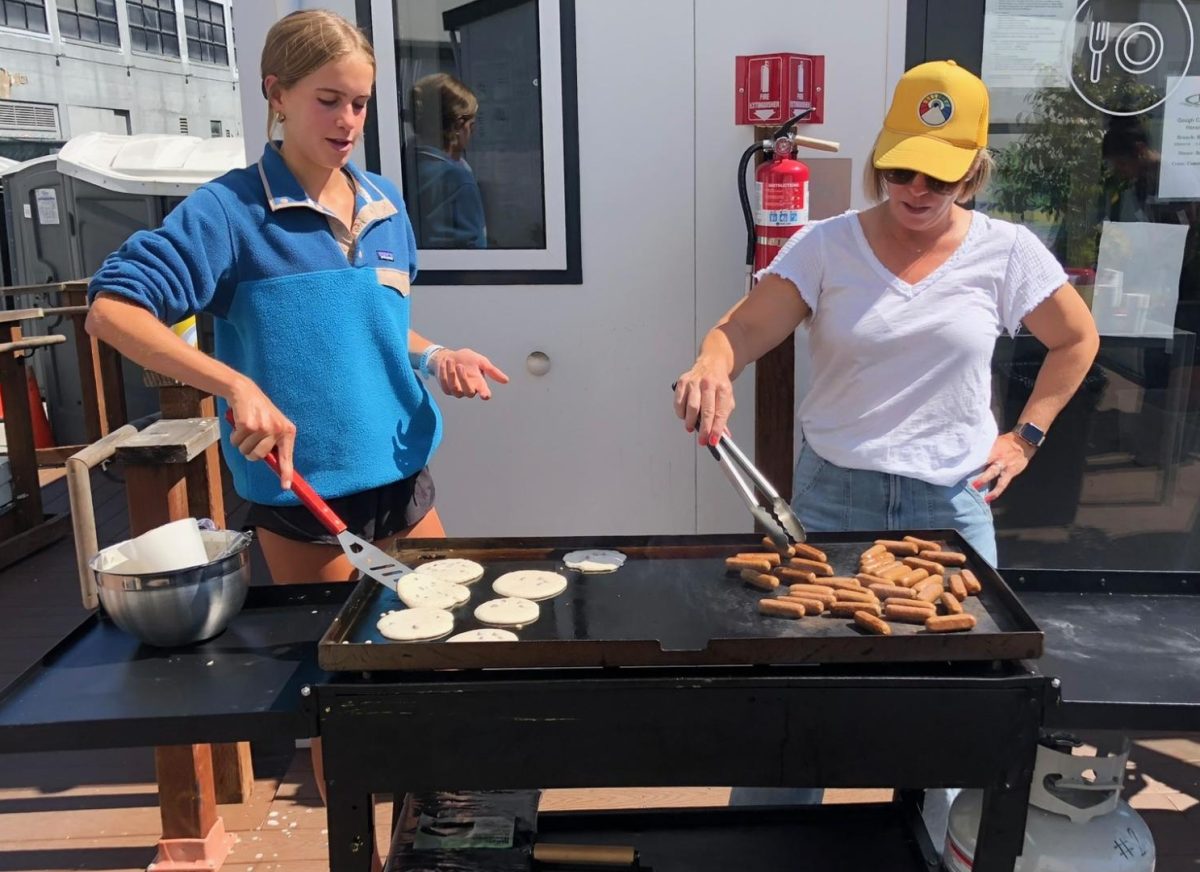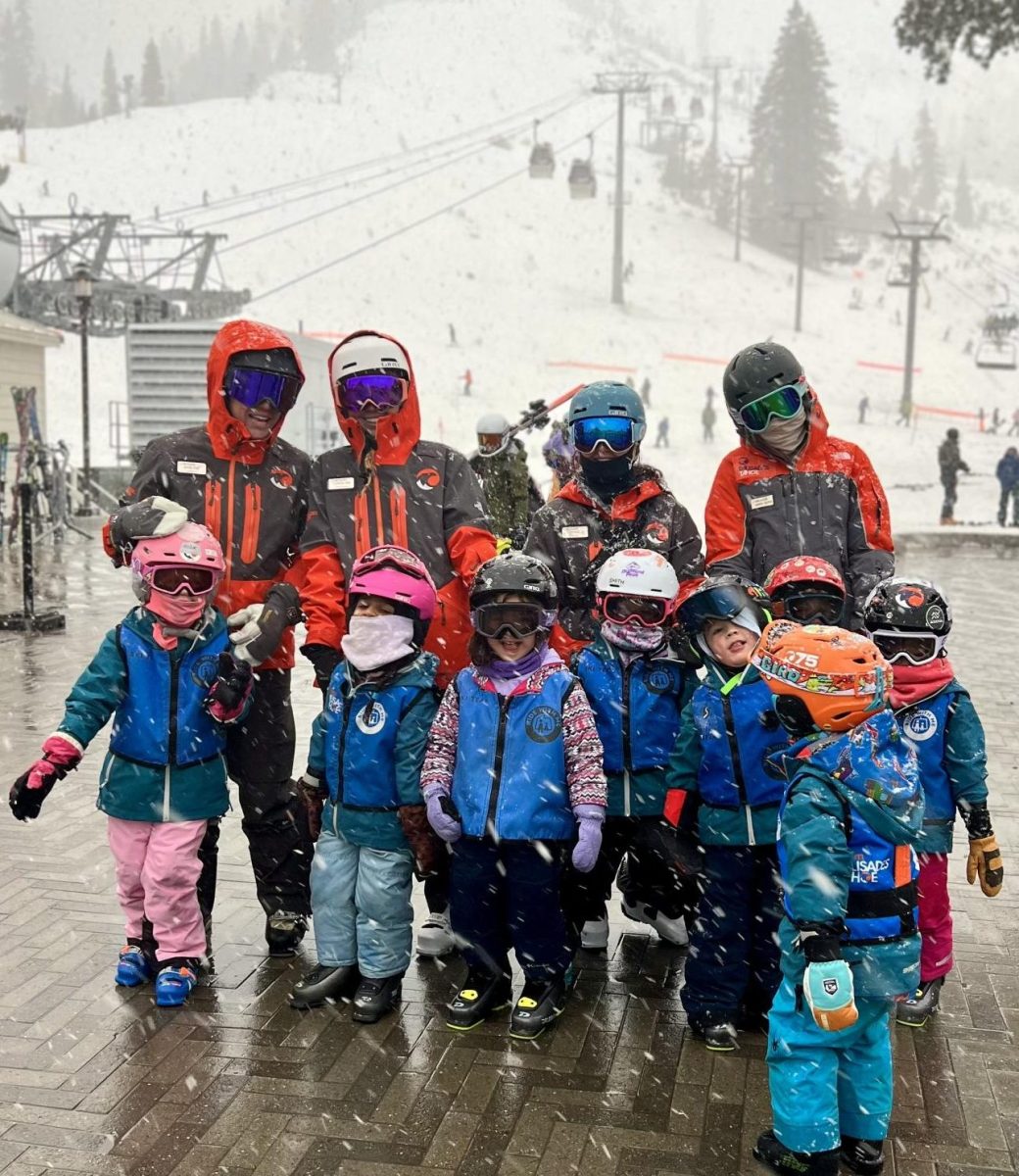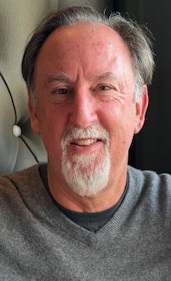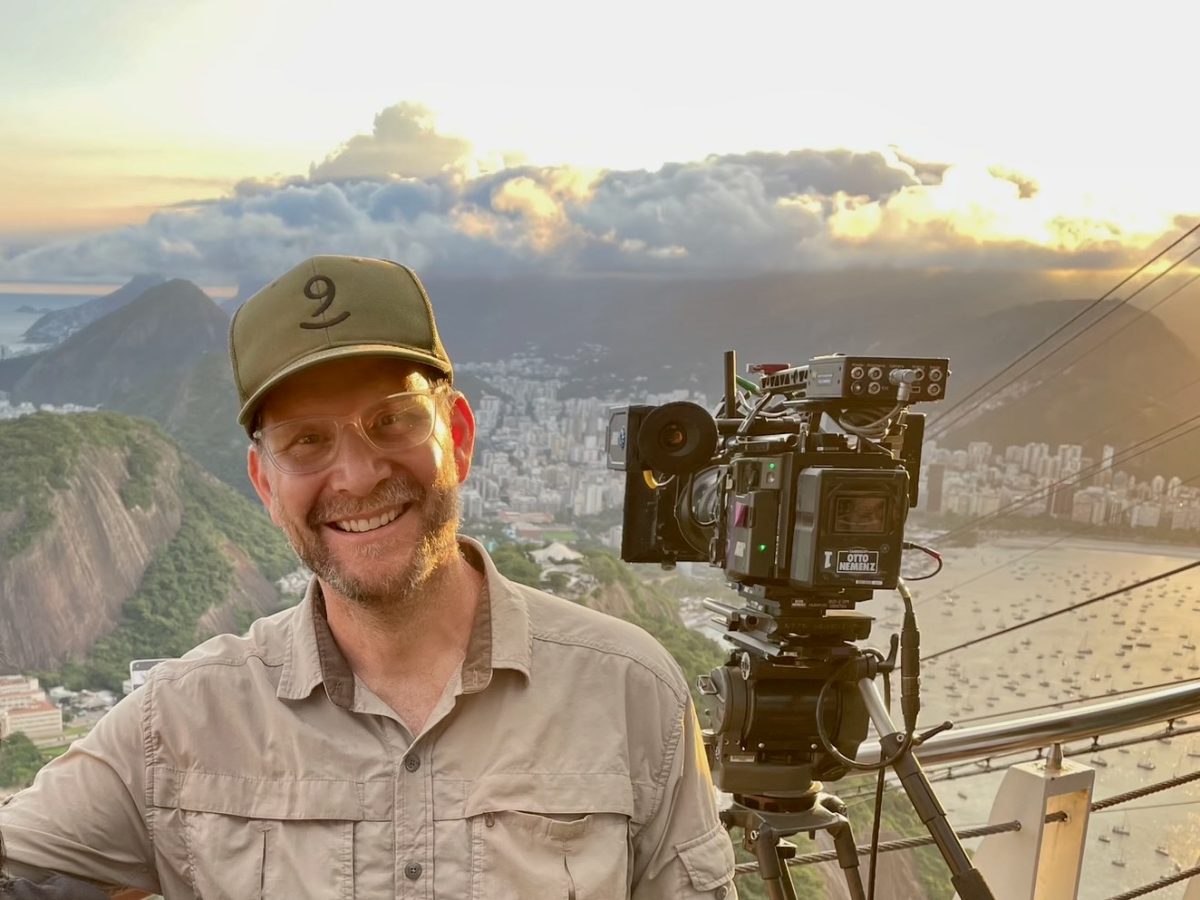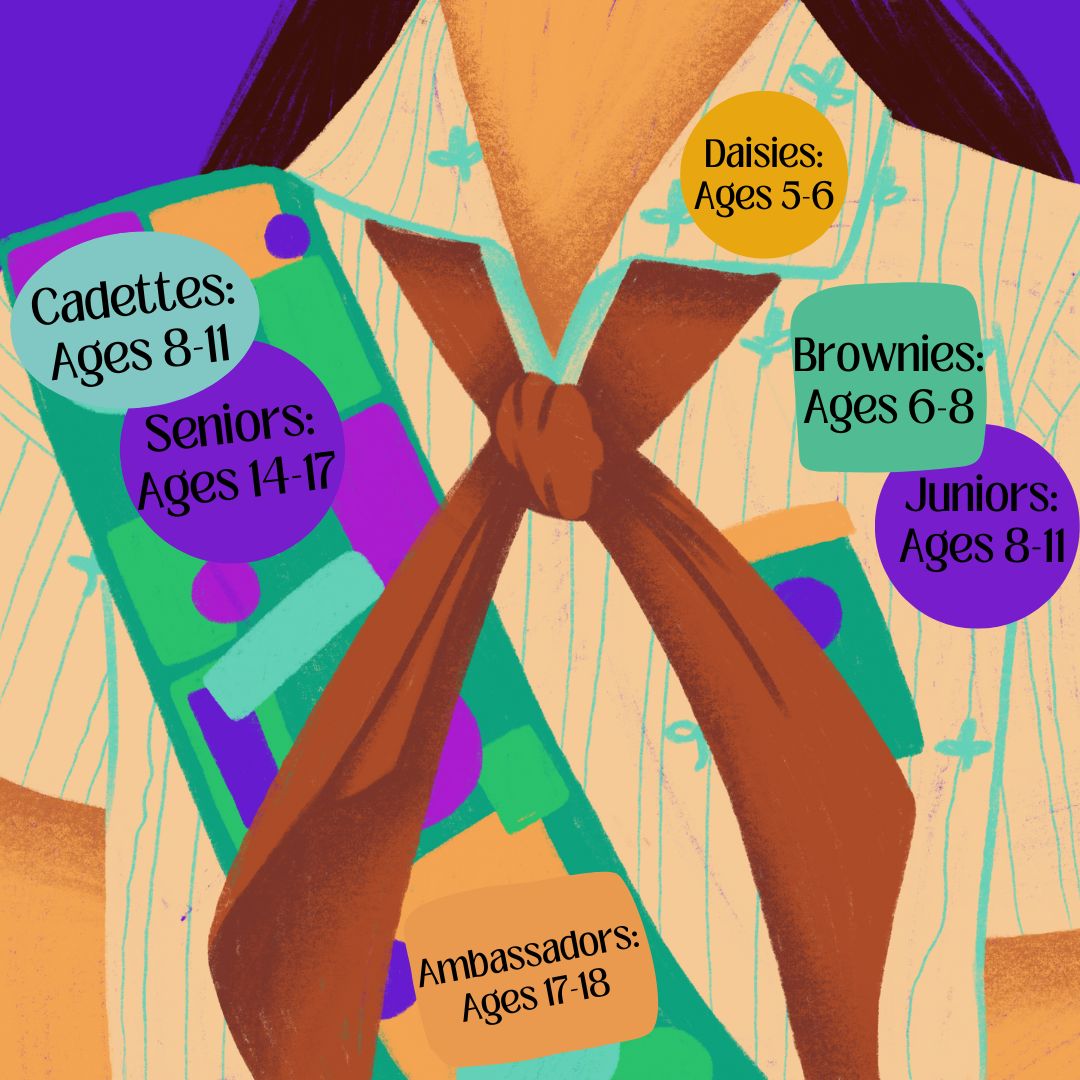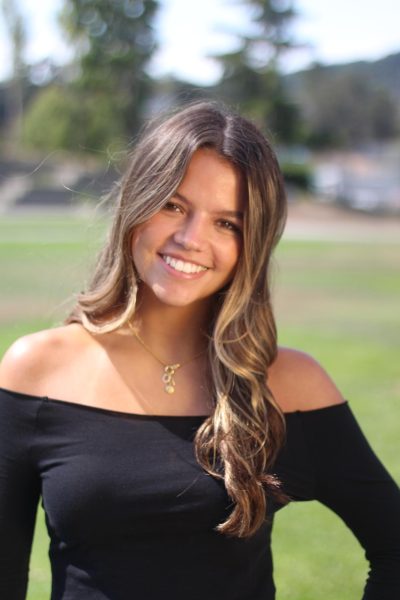Have you ever taken a peek into the Redwood trash cans? If you have, I’m sure you’ve found one thing: Energy drinks. Yerba Mate and Celsius cans litter the blue recycling bins in every class without fail.
Junior Ryan Scott and former student Will Foley hope to add to this mix of energy drinks with their own start-up, Rill Energy.
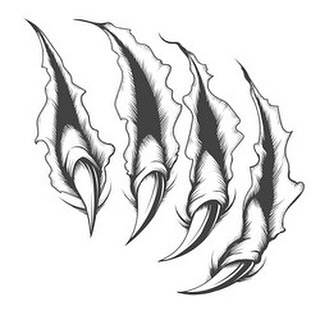
Scott and Foley are avid gym-goers and began drafting their business plan at the local gym, Five Points Fitness. The two went to school together for
years but formed a strong friendship over their shared love of working out. After years of consuming pre-workout and highly caffeinated drinks, the two noticed a serious issue: The “caffeine crash.”
“The one common factor we found was feeling terrible after our workouts. Because you juice yourself up, and you give yourself so much adrenaline and [caffeine], you just feel awful by the time it wears off. We wanted to create a solution to that,” Scott said.
They discovered that this tired and groggy feeling was a result of excess adenosine. Synthetic caffeine found in popular energy drinks works to block adenosine receptors, which prevents feelings of sleepiness. The issue is that once the synthetic caffeine wears off, consumers are hit with a wave of that built-up adenosine. In turn, they feel more tired and may even experience headaches and nausea.
Last summer, the idea of Rill Energy was conceived. In the hopes of finding natural stimulants to eliminate this “crash,” Scott began researching the effects of natural energizers, including vitamin D, ashwagandha, zinc and maca root.
“I went out into the sun [for] 30 minutes every day over the summer. I felt like I had so much more energy. So the first thing we did was research vitamin D. We ended up [putting] two-thirds the amount of your daily value needed for vitamin D into our formula because it’s super effective,” Scott said.
Scott and Foley have cultivated a unique and natural formula but have yet to test the product. They have not manufactured their drink yet but have consulted one of the flavor manufacturers at Monster Energy. With the help of the Monster manufacturer, they plan to make a tropical flavor and a fruit punch flavor and are in the process of making a nectarine flavor. In the next six months, they hope to receive enough funds from family and friends to produce testable samples.
“Our first plan of action is to start in local small businesses,” Foley said. “[We may] start in our gym or start in multiple gyms with fridges in front so we can get small sales from that. [We’ll do] product testing and get people involved in [the company] so they can give us feedback.”
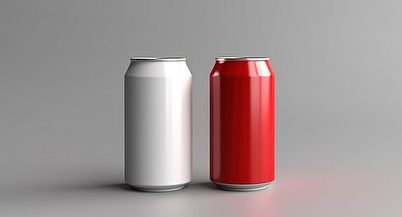
Scott and Foley have organized several people to be drink testers once they are able to produce samples. They plan to test out formulas with different caffeine levels and flavorings and have each taster fill out a survey for all the variations. One of the testers will be Marcus Aghili, a junior and longtime friend of Scott.
“[Scott and Foley are] both very hardworking … [and] they’re both ‘gym bros.’ [Scott], originally, was a little scrawny and then started going to the gym. [He was] very consistent with it, and became what I’d say is pretty strong. I think their work ethic is both seen in the gym and their business,” Aghili said.
After they complete the tasting and sampling stage, Scott and Foley plan to apply for a certification from the United States Food and Drink Administration (FDA).
These young entrepreneurs have taken advantage of many industry connections throughout their start-up process. Scott and Foley have leveraged connections through their family and friends as well as their own academic and professional experiences. They have received advice from various engineers and businessmen, including the chief executive officer of Izze, a soda company.
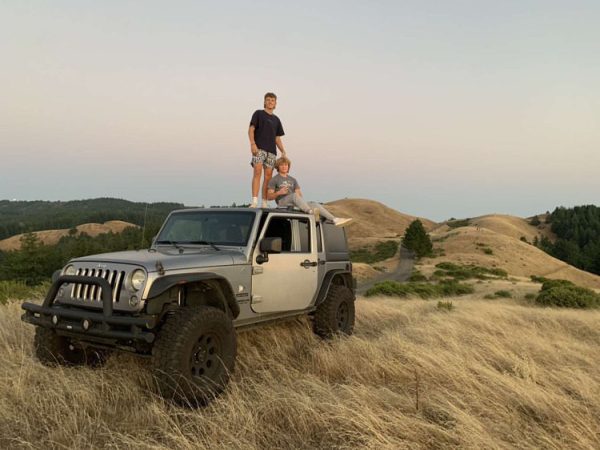
Last year, Foley moved to Portugal and is now attending a boarding school there. Still, the young entrepreneurs hope to continue their product development despite the significant time difference and distance. While Scott works on product formulation, Foley works on web and product design. Their equal division of labor is made clear in any conversation with the business partners. They believe that their teamwork, friendship and entrepreneurial spirit will take them all the way.
“What makes us a good team is just the fact that we are really good buddies, we have the same idea. The idea sparked into both of our heads, so it wasn’t more [of] one person saying, ‘Hey, let’s start a business.’ It was both of us who wanted to do this and it kind of created that drive and want to keep this company alive,” Foley said.
Despite the inevitable challenges and setbacks that any new and developing business will face, Scott and Foley still urge young entrepreneurs to take risks to pursue their interests.
“If you’re going into trying to create a business, always expect it to fail,” Scott said. “Don’t get your hopes up and think it’s going to succeed, because there [are] so many little things that can go wrong. Either way, if it does fail or succeed and you’re doing it in high school, it’s really good for your future and it’s a good experience.”

